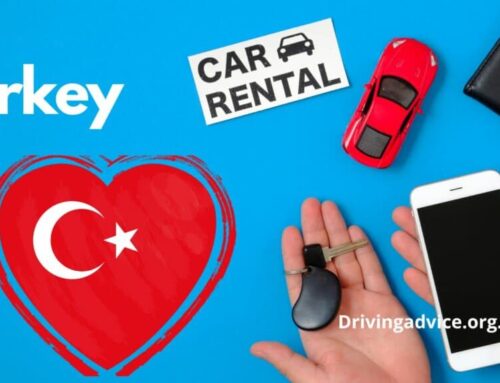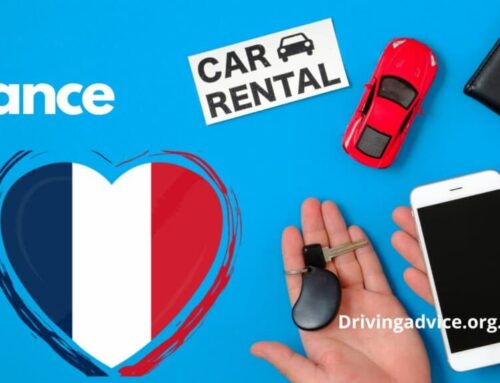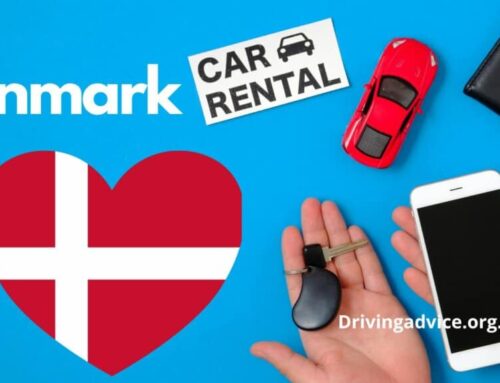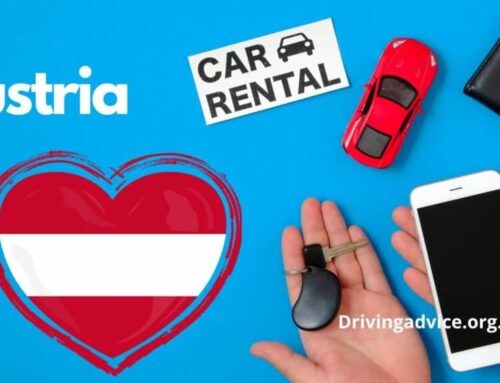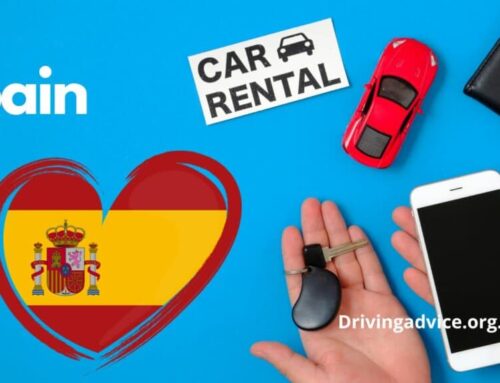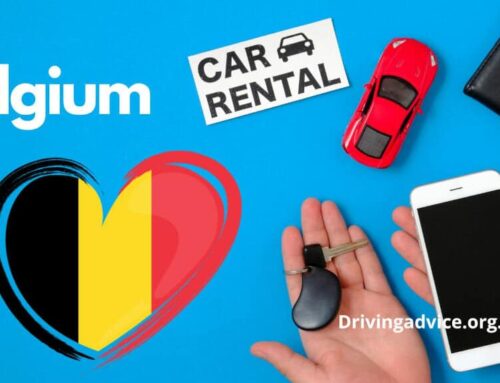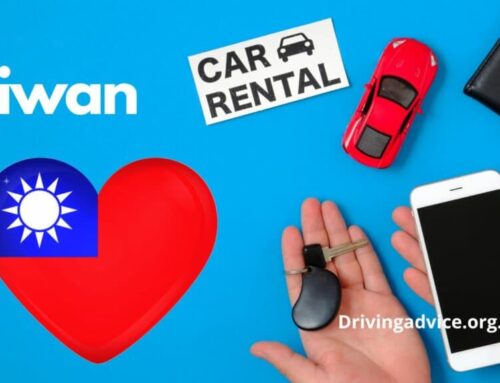With approximately 80% of tourists opting for the convenience of rental vehicles to explore the picturesque island of Cyprus, it’s clear that hiring a car is a popular choice for those looking to soak in the Mediterranean splendor at their own pace. This sun-drenched island, known for its rich cultural heritage and natural beauty, presents a compelling reason for travelers to hit the open road – from the stunning coastline of Paphos to the majestic ruins in the Troodos mountains. Renting a car in Cyprus doesn’t merely offer a means of transportation; it provides a gateway to discovering hidden gems off the beaten path, allowing for a personalized adventure through Cypriot landscapes. Whether one desires the freedom to linger in the charming villages dotting the countryside or the luxury of unhindered travel between the lively beaches, a rental car stands as an indispensable tool for personalizing a Cypriot odyssey.

Why Rent a Car in Cyprus?
As someone who has traversed the sun-kissed landscapes of Cyprus behind the wheel, I can say with confidence that renting a car in this Mediterranean paradise is a game-changer. Cyprus is an island of expansive beauty, with its azure coastlines, mountainous regions, and an array of historical sites, all of which beg for exploration. Public transport will not do justice to these treasures waiting to be discovered at your own pace and convenience. Renting a car provides the freedom to chart your own course – whether it’s to the hidden beaches of the Akamas Peninsula, the wine routes of Limassol, or the rugged terrain of Troodos Mountains. You get to create your itinerary, stop where you wish, and immerse yourself in the Cypriot way of life. So, buckle up, and let’s delve deeper into what you need to know before you hit the road in Cyprus, with the next sub-sections covering essential tips for car rental, must-visit places accessible by car, and how to navigate the island like a local.
What Size Rental Car: Big or Small?
When traveling to a new destination, the choice of a rental car can greatly influence your experience. Having been to Cyprus and sampled both spectrums of rental car sizes, I can share insights that might help you decide whether to go big or small with your rental car choice.
Reasons to Choose a Big Car
Comfort and Space
A larger car will generally provide more comfort, especially if you are traveling with family or a group. There’s ample space for passengers to sit comfortably during long drives and additional room for luggage, which is particularly beneficial if you have lots of baggage or plan on bringing back souvenirs.
Safety Perception
Big cars often give a sense of safety due to their size and robustness. Many people feel more secure driving a larger vehicle, which can be especially comforting on the unfamiliar roads of a new country.
Varied Terrain
Cyprus has a range of terrains, including mountainous areas. A big car, especially if equipped with a powerful engine and, potentially, four-wheel drive, can handle steep inclines and rugged landscapes more effectively than a small car.
Reasons to Choose a Small Car
Maneuverability
The narrow, winding streets that are common in many Cypriot towns and villages are much easier to navigate with a small car. You’ll find parking easier, and tight spots will be less of a challenge.
Fuel Efficiency
Smaller cars are typically more fuel-efficient, meaning your trips to the gas station will be less frequent and less costly—a definite perk for the budget-conscious traveler.
Cost-Effective
Besides saving on fuel, small cars are usually cheaper to rent. This cost difference can be significant, allowing you to allocate a larger portion of your travel budget to activities, dining, and accommodations.
Environmental Considerations
If you’re environmentally conscious, opting for a small, fuel-efficient vehicle will reduce your carbon footprint as you explore the island.
Both big and small rental cars have their advantages, and your choice will depend on the nature of your trip, personal preferences, and the experiences you wish to have in Cyprus. Consider the factors of space, comfort, cost, and intended driving routes before making your decision.
Picking up your Rental Car
During my travels to Cyprus, I have had the opportunity to rent cars at various locations, most notably at the island’s major airports and in several key cities.
Airport Car Rental Experience
Starting with the airports, I’ve picked up rental cars directly from Larnaca International Airport (LCA) and Paphos International Airport (PFO). At both locations, the rental process was remarkably convenient. After landing and collecting luggage, I followed the clearly marked signs to the rental car area. Each airport houses various car rental desks inside the terminal, so there’s no need to venture outdoors or take a shuttle bus to find the rental companies.
The staff at these desks have always been friendly and accommodating. In my experience, they not only help with the basic rental procedures but also offer valuable advice on driving in Cyprus and pointers on local traffic rules. They are also fluent in English, making communication easy and ensuring a smooth rental process for international travelers.
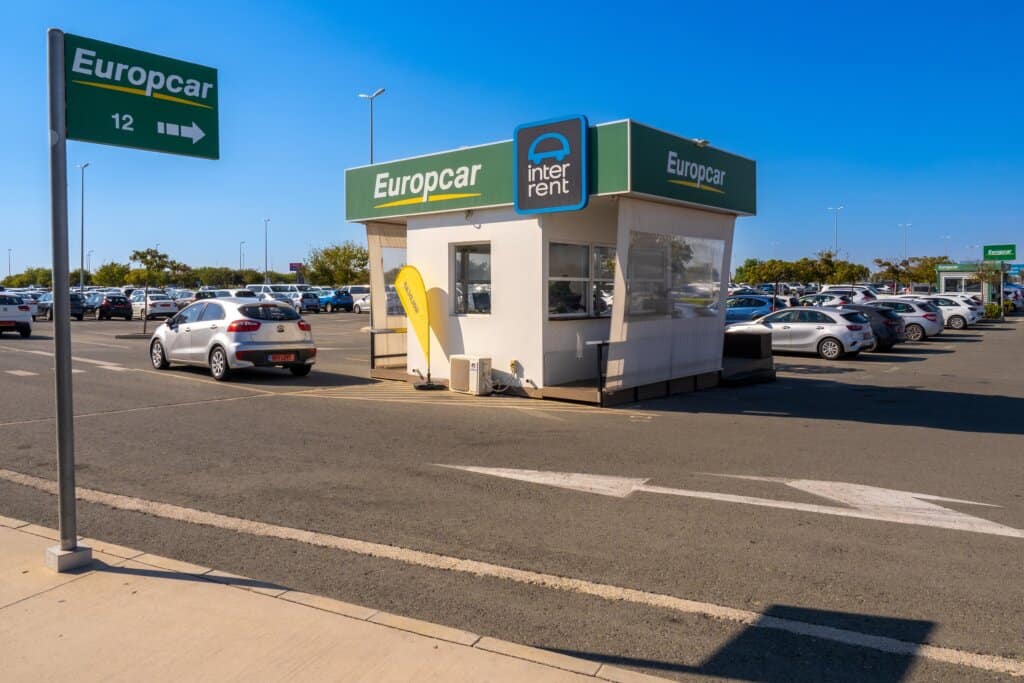
City Car Rentals
Outside of airport rentals, I have also rented vehicles in several cities across Cyprus. In the coastal city of Limassol, rental outlets are plentiful, providing convenient access for those who decide to rent a car after they’ve settled into their accommodations. Nicosia, the capital, offers several rental options as well, catering to those who may be visiting for business or pleasure.
In these urban settings, rental desks are usually found in the city center or close to major hotels. It’s always advisable to book in advance, especially during peak tourist seasons, to ensure availability and potentially better rates. Regardless of location, the service maintains its high standards, offering travelers peace of mind as they embark on their Cypriot adventures.
Insurance, Excesses and CDW
When renting a car in Cyprus, navigating through the various insurance options and associated terms can be a daunting task. Having recently visited Cyprus and rented a car myself, I’ve gone through the meticulous process and can shed some light on the legal requirements and options available.
Legal Requirements for Rental Car Insurance
In Cyprus, it is mandatory to have a basic insurance cover for any rental vehicle. This basic cover usually includes third-party liability, which protects you in the event that you cause injury to another person or damage to their property. However, third-party insurance does not cover damage to the rented car itself.
Collision Damage Waiver (CDW)
Most car rental companies offer Collision Damage Waiver (CDW) as an optional add-on. CDW limits your financial liability for damage to the rental car, with certain exceptions, such as damage to tyres, windows, and undercarriage. Even though CDW reduces your liability, it generally comes with an ‘excess’, which is the amount you still need to pay in the event of a claim.
For more information on CDW and rental car insurance regulations in Cyprus, you can visit the Cyprus Driving and Insurance Authority official website.
Excess and Excess Waivers
The ‘excess’ is essentially a financial commitment from your side where you agree to pay the first portion of any claim, up to the amount specified in the rental agreement. This amount can vary significantly. To avoid unexpected expenses, many travelers opt for an excess waiver, also known as Super CDW or additional cover, which can reduce or eliminate the excess entirely.
When considering excess waiver options, be aware that this additional cover is often considerably more expensive when purchased directly at the rental desk as opposed to buying from independent insurance providers. It might be cost-effective to explore third-party insurance providers who offer excess waiver policies.
Reasons to Fully Cover Your Excess
Choosing to fully cover your excess with an excess waiver policy might seem like an unnecessary additional cost, but it can be a financially prudent choice. Roads in Cyprus can vary in quality, and driving styles can differ from what you are used to. These factors increase the risk of minor scrapes or accidents which could lead to costly repairs if you are not fully covered. Additionally, securing full excess coverage means you can enjoy your trip without worrying about potential repair costs if an incident occurs.
Understanding the Small Print
Before signing any rental agreement, it is essential to read the small print and understand what you are responsible for. Pay close attention to what is included in the insurance coverage and what isn’t. For instance, personal accident insurance, coverage for personal belongings, or roadside assistance may not be included and could be important depending on the nature of your trip.
By doing your research ahead of time and reading the terms and conditions thoroughly, you can prevent any unpleasant surprises and ensure that your holiday in Cyprus is both enjoyable and worry-free. Don’t overlook the importance of the fine print – it can make a significant difference in how well you’re protected on the road.
Renting Eligibility
Renting a vehicle in Cyprus comes with its own set of rules and criteria that one must meet to be able to get behind the wheel of a rental car. While the legal age for driving in Cyprus is 18 years, car rental companies often require the driver to be at least 21 years old. However, it is not uncommon for many agencies to set their minimum age requirement at 25 years.
Legal Age vs Rental Age
Although starting at the age of 18, Cypriots and visitors alike can legally drive a vehicle, car rental agencies in Cyprus are cautious due to the higher risk and insurance premiums associated with younger drivers. Hence, they impose a higher age limit. In addition to the age requirement, most companies also require that the driver has held a valid driving license for a minimum of one to three years.
Addition of Young Driver Surcharge
For drivers who are under the age of 25 but over the rental agency’s minimum age for renting, a ‘young driver surcharge’ may be applied. This additional cost seeks to mitigate the risk that statistically comes with younger, less experienced drivers. The exact surcharge can vary between different rental providers and it’s always a good idea to check this in advance.
Required Documentation
When renting a car in Cyprus, the necessary paperwork typically includes a valid driving licence, a credit card for the security deposit, and sometimes proof of insurance or an international driving permit, especially for non-EU residents. Make sure to bring all the essential documents to avoid any inconvenience at the time of rental.
For more detailed information and additional resources on driving and renting a car in Cyprus, you can visit the Republic of Cyprus Road Transport Department, which provides comprehensive information on driving regulations in Cyprus. It’s also advised to check with your chosen car rental company for their specific guidelines and conditions before making arrangements. Those planning on staying longer in Cyprus or Cypriot residents can refer to the Cyprus Driving License Information page for further details on driving licenses and regulations.
Remember, while it’s exciting to explore the magnificent island of Cyprus at your own pace with a rental car, ensuring that you are eligible and adequately prepared before you rent can save you time and help you avoid potential problems during your adventure.
Documentation Needed to Rent a Car
When looking to rent a car in Cyprus, you will need to present several documents at the rental desk to fulfill the legal requirements and prove your eligibility to drive. The essential documents you should carry with you include:
- Valid Driving License: A driving license is mandatory. You will need to have your driving license from your home country, which should be valid for the entire duration of your rental period.
- Passport or Identity Card: Rental car companies will also require a valid form of identification such as your passport. This is to verify your identity and to ensure your driving license is legitimate. Some companies might also accept a national ID card, but a passport is the most widely accepted form of identification.
- Credit Card: A credit card under the driver’s name is typically necessary to block a security deposit required by the rental agency. Make sure your credit card has sufficient funds to cover the deposit.
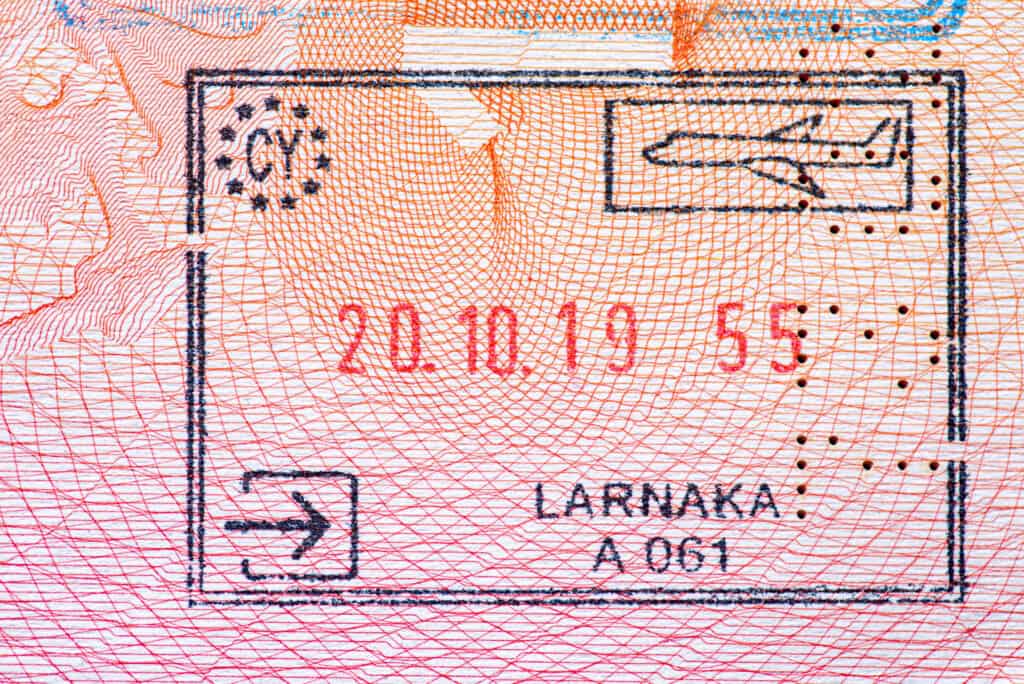
Understanding International Driving Permits
An International Driving Permit (IDP), also known as an International Drivers License, is a document that translates your national driving license into several languages and is recognized by many countries worldwide. It is designed to accompany your national driving license, not to replace it.
In Cyprus, an IDP is required for residents of countries that are not part of the European Union (EU) or the European Economic Area (EEA). It is also mandatory for those whose licenses are not in Greek or English. Thus, if you live outside the EU/EEA area, or if your license is not in an acceptable language, you must obtain an IDP.
You can find more information on acquiring an International Driving Permit from the American Automobile Association (AAA) if you are from the United States or from the UK Government website if you are from the United Kingdom. For specific requirements in Cyprus, refer to the Cyprus Ministry of Communications and Works.
Where Do I Rent a Car in Cyprus?
Cyprus, with its scenic landscapes and historical treasures, calls for the ease and freedom of a car to fully explore its many charms. Fortunately, renting a car in Cyprus is straightforward and there are numerous options available regardless of where you find yourself on the island.
At the Airport
Upon arrival at Larnaca or Paphos International Airport, you’ll be greeted with a variety of car rental companies ready to serve your needs. Some of the reputable companies operating directly from the airports include Europcar Cyprus, Sixt, Avis, Hertz, and Budget. Their desks are typically located in the arrivals hall, meaning you can sort out your car rental soon after picking up your luggage.
Train Stations and City Centre
While Cyprus does not have a train system, car rental services are found aplenty in city centres such as Nicosia, Limassol, Larnaca, and Paphos. Companies such as Europcar and Sixt have branches across the island’s main cities. You’ll also find local operators that offer competitive rates if you’re willing to do some research upon arrival.
Online Pre-Booking
Renting a car online before your travel has several benefits. First, it saves you valuable time upon arrival, often securing better deals than last-minute rentals. Websites such as Rentalcars.com, Kayak, and Expedia allow you to compare prices from various car rental companies, ensuring you get the best rate and car that fits your preferences.
One potential downside to online pre-booking is that it often requires a credit card and may have cancellation fees, depending on the company’s policy. Additionally, should your plans change, altering your booking last minute could attract extra charges. Always read the terms and conditions before booking.
Companies like Europcar, Sixt, and many others offer their own user-friendly booking websites, which may also offer exclusive deals or loyalty programs benefits if you book directly with them.
Renting a car in Cyprus can greatly enhance your travel experience, offering the flexibility to explore the island at your own pace. Whether you choose to rent directly at the airport, in the cities, or prefer the convenience of pre-booking online, options are plentiful and cater to a wide range of preferences and budgets. Just remember to drive on the left side of the road and enjoy the journey!
Is Renting a Car in Cyprus Safe?
For those considering renting a car and driving in Cyprus, safety is naturally a paramount concern. From my personal experience, Cyprus offers a solid driving environment with well-maintained roads and highways, alongside a mix of driving cultures that blend both relaxed and fast-paced attitudes.
The Condition of Cypriot Roads
The country’s infrastructure is generally of a high standard, and this extends to its roads. Major highways, such as the A1 connecting Nicosia and Limassol or the A6 leading to Paphos, are in excellent condition and provide smooth transit comparable to other European motorways. They are well sign-posted, and navigating them is quite straightforward, making inter-city travel quite safe. However, be aware that the speed limits are strictly enforced, with speed cameras and on-the-spot fines a common feature.
The situation is somewhat different once you leave the highways. In the countryside, while primary roads are still in good shape, secondary routes can be less predictable. Some country roads may have potholes or uneven surfaces, especially those less frequently travelled. This means that extra caution is needed when driving through rural areas, particularly at night due to limited street lighting.
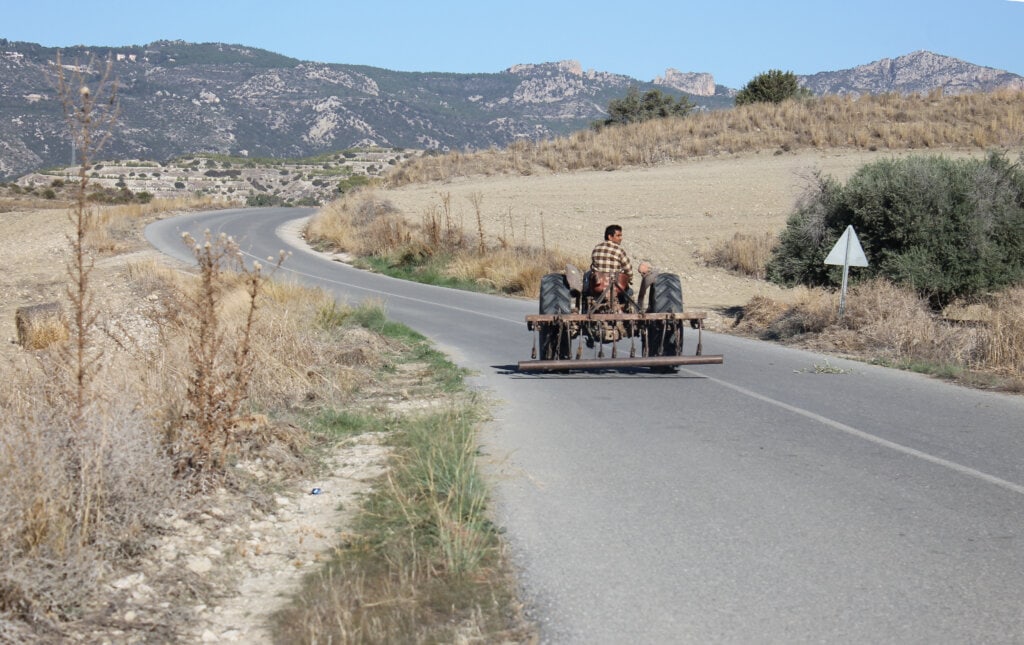
Driving Practices in Cyprus
Cypriot drivers, much like the roads, present a mix of experiences. Generally, drivers in Cyprus are courteous and follow road rules. In cities, you’ll find that the driving temperament is a bit more aggressive, similar to what you might expect in urban areas of other countries. Expect quick lane changes and less adherence to speed limits within city limits.
Smaller villages, on the other hand, have a contrasting driving atmosphere. The pace slows down significantly, and you’ll often find that local drivers are more patient and accommodating. That said, narrower village streets can pose a challenge, especially when it comes to navigating around parked cars and encountering oncoming traffic.
Lastly, it’s important to note that driving is on the left-hand side of the road in Cyprus, a practice inherited from British rule. Visitors who are accustomed to right-hand driving will need a little time to adjust. Therefore, care and attentiveness are especially important for those not familiar with this aspect of driving.
Overall, renting a car and self-driving in Cyprus can be considered a safe option, provided that you respect the local driving laws, adjust to prevailing road conditions, and stay mindful of changing driving behaviors from highways to village roads.
Is Renting a Car in Cyprus Expensive?
When visiting Cyprus, considering different modes of transportation is essential. Renting a car offers flexibility and convenience, allowing tourists to explore the island at their own pace. However, understanding the various costs associated with car rental is key for travelers planning their budget.
Car Rental Costs
The cost of renting a car in Cyprus can vary depending on the time of year, type of vehicle, and rental duration. On average, a small to medium-sized car may cost somewhere between €25 to €50 per day. This price often includes basic insurance, but for additional coverage, renters may need to pay extra. Many rental companies also offer weekly rates that can be more economical for longer stays, potentially reducing the daily cost.
Toll Roads and Parking Fees
Cyprus does not have toll roads, simplifying travel costs for those who rent cars. Parking fees, however, should be factored into the budget. Municipal parking lots typically charge a small fee, often ranging from €1 to €3 for a day’s parking, while private parking lots and garages might have higher rates. Hotels may also provide parking, sometimes at no additional cost, but it is always best to confirm before booking.
Fuel Costs
Fuel is an additional expense that visitors must consider when renting a car in Cyprus. Prices for petrol and diesel fluctuate based on international markets but expect to find prices that are somewhat higher than the European average. As of the latest figures, the cost of petrol is approximately €1.20 to €1.30 per liter. Diesel tends to be slightly cheaper. Considering this, the total fuel cost would largely depend on the amount of driving planned during the stay.
It is important to note that prices for car rentals, parking, and fuel are subject to change. For the most accurate budgeting, travelers should contact rental companies directly and check the current fuel prices during their travel planning phase.
Renting Automatic Cars in Cyprus
Visiting Cyprus is an experience enriched by the freedom of driving through its scenic routes and exploring hidden treasures at your own pace. The decision to rent an automatic car in Cyprus can greatly influence the quality of your travel experience. Automatic transmission vehicles are especially beneficial for those who are accustomed to driving them back home. The ease of not having to manually shift gears is particularly appreciated when navigating through unfamiliar territory.
Why Opt for an Automatic?
Renting an automatic car in Cyprus offers a hassle-free driving experience. With the island’s winding roads and varied terrain, from the Troodos Mountains to the coastal paths, not having to constantly operate a clutch allows for a smoother journey. These vehicles are perfect for travelers who prefer focusing on the scenery rather than the mechanics of driving. Furthermore, those from countries where automatic cars are the norm will find this option much more comfortable and intuitive.
Perfect for Novices and Comfort-Seekers
Automatic cars are particularly good for novice drivers or those who may not feel confident driving manual transmission vehicles. First-time drivers in Cyprus will appreciate the simplicity of automatic gear changes, as it is one less thing to think about when adjusting to driving on the left side of the road—a practice that may already be foreign to many. Moreover, drivers seeking a relaxed trip without the physical strain of using a clutch will find automatic cars to be a perfect fit.
It is important to bear in mind that the availability of automatic cars for rent in Cyprus is less compared to manual cars. Due to their popularity among tourists and certain locals, automatic vehicles tend to sell out quite quickly. Hence, it is imperative to book your automatic rental car well in advance of your trip, particularly if you are not adept at driving stick. By securing your automatic car early, you can ensure that your travel plans in Cyprus unfold with ease and convenience. So, remember to reserve your automatic vehicle as soon as your travel dates are confirmed to avoid the disappointment of missing out on your preferred mode of transport.
Do I Need Air Conditioning
Visiting Cyprus, especially during the warmer months, can be a delightful experience. The island’s sunny disposition calls for breezy coastal drives and scenic routes through ancient ruins and rugged landscapes. However, the climate may raise the question: is air conditioning necessary in your rental car? Let’s explore the pros and cons.
Pros of Using Air Conditioning
- Comfort: Cyprus can get quite hot, particularly from June to August. Having air conditioning in your rental car offers a reprieve from the scorching heat, keeping you cool and comfortable during your travels.
- Better Driving Experience: Driving in a hot and stuffy car can be unpleasant and distracting. Air conditioning helps in maintaining a cool environment, ensuring a more pleasant and focused driving experience.
- Health Reasons: For individuals sensitive to heat, such as children, the elderly, or those with certain health conditions, air conditioning isn’t just about comfort; it’s a necessity for preventing heat-related health issues.
- Keeps Insects at Bay: With air conditioning, you can keep windows closed, which is quite beneficial in keeping out pesky insects, especially during the evening or in rural areas.
Cons of Using Air Conditioning
- Increased Fuel Consumption: Running the air conditioning can lead to higher fuel consumption. This means that you’ll be paying more for gas, which can add up over longer trips.
- Environmental Impact: Increased fuel consumption also has a greater environmental impact due to the higher emissions associated with more frequent refueling.
- Authentic Experience: Some travelers may feel that constantly using air conditioning insulates them from the natural ambiance of the island, including the smell of the sea and the sounds of the local environment.
- Cost: Depending on your rental agreement, having air conditioning in your vehicle may lead to a higher rental cost. It’s essential to consider whether the benefits outweigh this additional expense.
Ultimately, whether to opt for air conditioning in your rental car in Cyprus depends on your personal preferences, the season, and the particularities of your trip itinerary. Weighing these pros and cons should help you make an informed decision that will enhance your experience on this beautiful island.
Cyprus Driving Etiquette
Driving in Cyprus is an experience that is quintessentially Mediterranean, with its own set of unspoken rules and local driving customs. For new arrivals and visitors, it’s essential to quickly adapt to the local driving etiquette to ensure a safe and enjoyable journey across this beautiful island.
Keep Left
Firstly, it’s important to remember that, in Cyprus, driving is on the left-hand side of the road, a practice inherited from British rule. This can be immediately disorienting for those used to driving on the right, but with attentiveness, it becomes second nature quite quickly. Roundabouts also operate in a clockwise direction, with the traffic inside the roundabout having the right of way.
Understanding Local Drivers
Cypriot drivers are known for being relaxed, which could be a stark contrast to the more regimented driving style you might be used to. Don’t be surprised to find local drivers bending the rules slightly, such as by parking on pavements or taking liberties at junctions. For the most part, patience and a calm approach are the best ways to deal with these informal habits.
Speed Limits and Regulations
While locals tend to drive leisurely, adherence to speed limits can be hit or miss. In towns, the limit is usually 50 km/h, while on open roads it’s 80 km/h, and on the motorway, the limit reaches up to 100 km/h. Speed cameras and traffic police are present, so it’s best for visitors to stick diligently to these limits to avoid fines.
Overtaking and Lane Discipline
Overtaking is generally accepted and common on Cypriot roads, and is typically done on the right. However, it’s not unusual to see overtaking on the left on rural roads if the way ahead is clear. Lane discipline can be somewhat casual, with drivers sometimes drifting across lanes without clear signaling, so it’s wise to remain alert.
Hospitality on the Road
Despite the aforementioned nuances, Cypriot drivers are often very hospitable. They tend to be understanding toward tourists and can be quite forgiving of driving faux pas, as long as they are not egregious. A friendly wave of acknowledgment or apology can go a long way in smoothing over any minor misunderstandings on the road.
Driving at Night
Driving at night in Cyprus requires additional caution. Some rural and even suburban areas may have poor lighting, meaning pedestrians and cyclists are harder to spot. Moreover, local drivers might not always use their headlights appropriately, so it’s prudent to drive with extra care after dark.
Overall, driving in Cyprus can be a delightful part of your experience on the island. Keeping these aspects of local driving etiquette in mind will not only ensure that you stay safe but will also help you blend in and navigate Cypriot roads like a seasoned local.
Fuel and Rest Stops
During your travels through Cyprus, you’ll notice that the island provides a comprehensive network of petrol stations, offering a range of fuels to keep your journey running smoothly. Understanding the types of fuels available and how to utilize the facilities will ensure a seamless trip across this beautiful island.
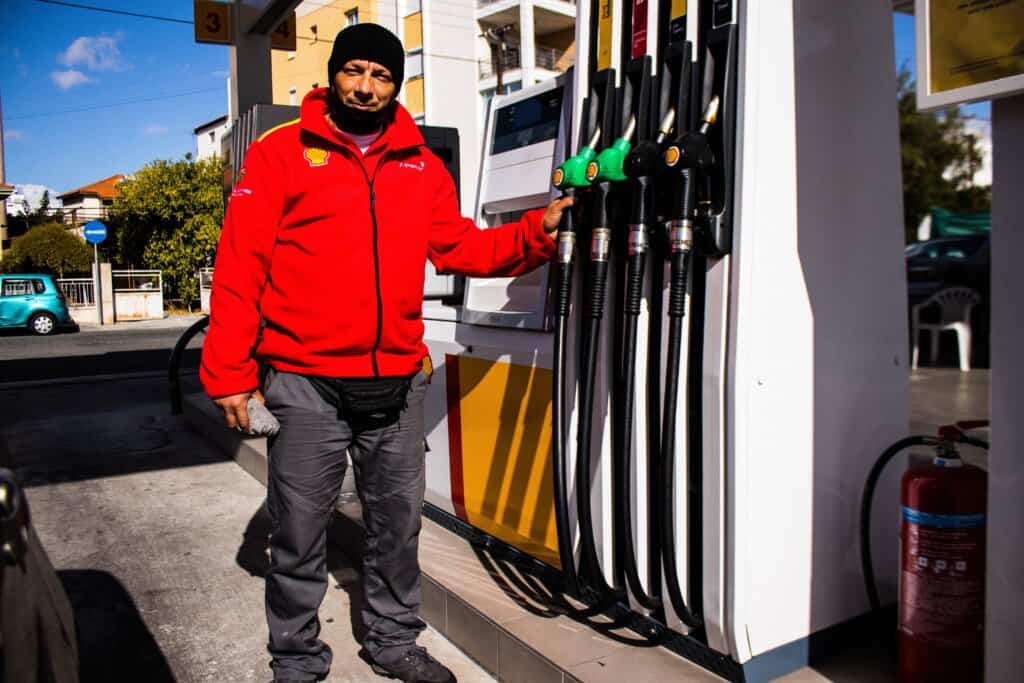
Types of Fuel Available
Most petrol stations in Cyprus offer unleaded petrol (95 and 98 octane) and diesel. It is crucial for motorists, especially those using rental cars, to verify the correct fuel type for their vehicle. Usually, the fuel cap or the car’s manual will indicate the required fuel. Using the wrong type can cause significant damage to the vehicle’s engine and may lead to expensive repair costs. Additionally, LPG (Liquefied Petroleum Gas) is less common but available at certain stations for vehicles that are equipped to run on this alternative fuel.
Rental Car Fuel Guide
It is essential to check your rental car’s fuel type before leaving the rental agency. Staff are typically helpful and will ensure you understand the type of fuel your rental car requires. Keep in mind that most rental cars in Cyprus are petrol-powered, and diesel cars are less common. If unsure, always ask for clarity to avoid any potential complications.
Finding Fuel Stations
Finding a petrol station in Cyprus is relatively straightforward. They are frequently situated in towns, along roadsides, and near motorways. Many of them are open 24/7, though some in rural areas might have more restrictive hours. It is advisable to plan your route and refuel in urban centers if you’re venturing into more remote locations. The stations in town centers and along the highways not only offer fuel but also serve as mini-markets, providing snacks, drinks, and restroom facilities, making them perfect rest stops.
Payment Methods and Helpful Tips
Most stations accept credit cards, debit cards, and cash. Some are full-service, meaning an attendant will pump the gas for you, while others are self-service. It is helpful to carry some cash in the event that payment systems are down or if you visit a remote station where credit card facilities might not be available.
Additionally, when driving in Cyprus, it is worth noting that the fuel prices can vary slightly between different brands and regions. Hence, it might be beneficial to compare prices if you have the option. However, the differences are usually not substantial enough to warrant a significant detour.
Lastly, it’s good practice to keep the fuel tank at least a quarter full at all times. This precaution ensures that you won’t be caught off guard by unexpectedly long distances between stations or the occasional closure of rural petrol stations.
Parking
In Cyprus, the parking situation varies depending on where you are and what time of day it is. Generally, you will find that parking is not as expensive as you might expect, especially when compared to some other European countries. The cost can range from free in some towns and villages to a few euros for several hours in busier areas or city centers. However, as with any destination, there are a few nuances to parking in Cyprus that visitors should be aware of.
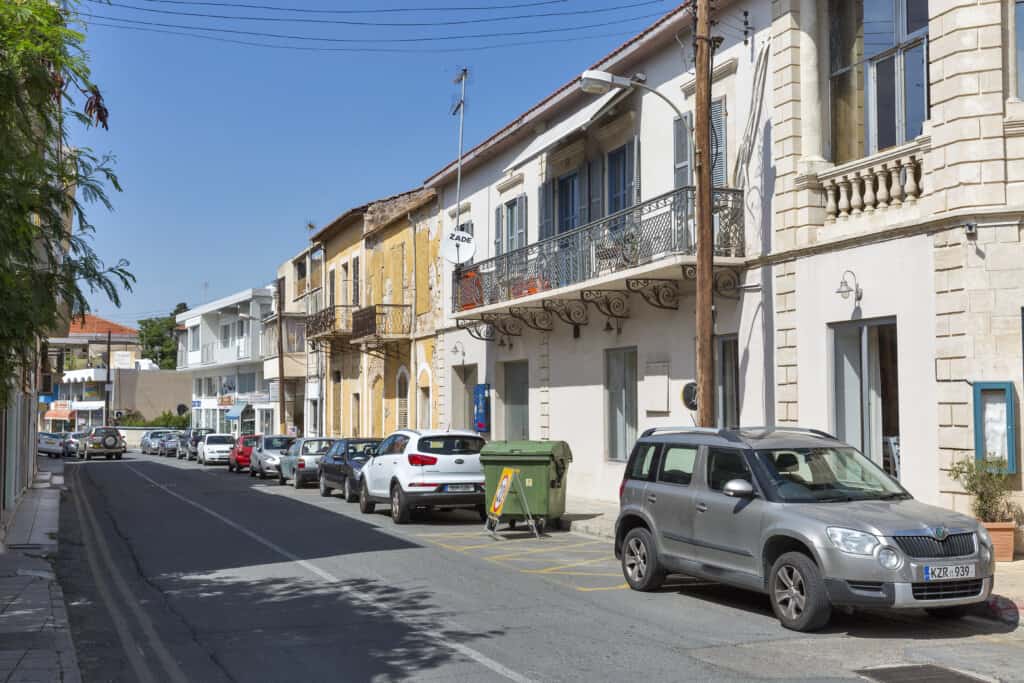
Parking in Cities and Historic Towns
In the city centers and historic towns such as Nicosia, Limassol, Paphos, and Larnaca, finding a parking spot can be somewhat challenging, particularly during peak hours. Many areas in these cities offer parking spaces with parking meters where you can expect to pay a small fee for a set duration. The costs for metered parking will generally range from €0.20 to €1.50 per hour. Pay attention to the designated parking times and maximum duration because it’s common for these to vary throughout the day and be more restrictive in high-traffic tourist areas. It’s also worth looking out for municipal parking lots, which can be more cost-effective for longer stays.
Parking outside the town/city and using public transport
When it comes to parking outside the main towns or cities, you are more likely to find free parking opportunities. Many larger attractions or places of interest will have designated parking areas that come at no cost. This can be a great strategy if you don’t mind a short walk or catching public transport into the busier areas. Public transport in Cyprus includes buses and service taxis, which can be a convenient way to get around once you’ve parked your vehicle. This also means you can avoid the busier and often more expensive parking areas in the city centers.
On-Street Parking
On-street parking is common in Cyprus, and while a good number of on-street parking spots are free, particularly in less crowded areas, always make sure to look for signs indicating restrictions or required payments. Blue zones are designated paid on-street parking areas, indicated by blue road markings. You’ll need to purchase a parking coupon or ticket from nearby machines or sometimes shops and display it on your dashboard. These are typically inexpensive but failing to comply can result in fines. Generally, on-street parking is free of charge on Sundays and public holidays, and often outside of normal working hours. However, make sure to double-check any signage to avoid penalties.
Driving in Cypriot Towns
Maneuvering a car through the streets of Cypriot towns presents a unique driving experience that embodies the blend of historic charm and modern challenges. Navigating the narrow, winding roads can feel like taking a step back in time, with the occasional cobblestone patch and views of ancient architecture. However, contemporary features such as traffic signals and road signs integrate the past with present-day driving conditions.

Navigational Tools
One of the main advantages of driving in the Cypriot towns is the easily accessible navigational technology. With winding streets and occasional unmarked roads, relying on traditional map-reading skills can be daunting for even the most experienced drivers. The use of sat nav and GPS devices provides a comforting solution for those unfamiliar with the local traffic patterns.
Convenience and Time Saving
Finding your way around with the help of technology doesn’t just offer peace of mind; it is also a considerable time-saver. Whether you’re searching for a specific street in the old part of Nicosia or looking for the fastest route through the bustling roads of Limassol, a sat nav can provide real-time updates and alternative routes to avoid congestion, saving precious minutes on every journey.
Enhanced Safety
For those not accustomed to the right-hand driving system in Cyprus, using a GPS device can reduce the stress associated with remembering the road rules and directions simultaneously. This can enhance the overall safety for both the driver and pedestrians, especially in high-density areas where paying attention to the surroundings is crucial.
Utilizing the wonders of modern-day GPS ensures that anyone behind the wheel can explore the enchanting towns of Cyprus with confidence and ease. Whether visiting the busy streets or quaint alleys, the combination of historical allure and cutting-edge technology makes for an unforgettable driving experience on this Mediterranean island.
Drive on the Right
Driving on the right side of the road can be a significant adjustment for drivers accustomed to left-hand traffic. One of the first considerations is the need to mentally flip your road position and the direction of traffic flow. This requires constant vigilance, especially when entering or exiting roads, to avoid the instinctive pull to revert to left-sided driving.
Vehicle Adjustments
In a car designed for right-hand traffic, the driver’s seat is on the left. This means you’ll be shifting gears with your right hand if you’re driving a manual transmission, which might feel awkward at first. The orientation of the controls takes a little getting used to. Moreover, your field of vision changes as you must now look over your left shoulder to check your blind spot when overtaking or changing lanes.
Roundabout Navigation
Roundabouts in Cyprus, as in all countries where you drive on the right, operate with a counterclockwise flow. When approaching a roundabout, remember to give way to traffic coming from your left. Always check for cars already on the roundabout before entering, and signal your intended exit in advance. Remember that your exit will now be to the right of the roundabout rather than the left, so position your car accordingly.
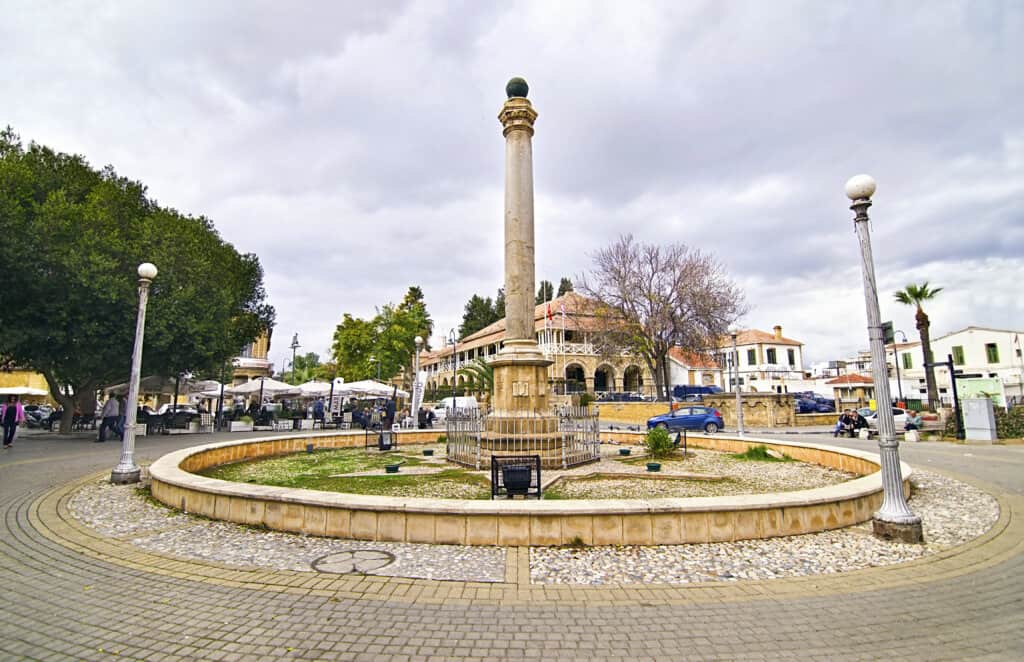
Intersections and Turns
At intersections, turns require a new approach. When you’re used to driving on the left and making a right turn, you typically cut across the traffic. In countries where you drive on the right, it’s the left turn that requires crossing over lanes. It’s important to stay in the correct lane as you approach a turn and to be aware of oncoming traffic, which has the right of way. Always signal early and ensure you’re in the lane closest to the direction you’re turning towards.
Staying Alert
One of the most critical aspects of driving on the right is remaining hyper-alert during the first hours and days as you acclimate. It’s advisable to avoid multitasking and reduce any distractions within the vehicle, such as loud music or active conversations, until you’ve adjusted to the new driving orientation. This heightened awareness is particularly crucial when making turns and negotiating roundabouts, where there is a greater risk of reverting to left-hand habits.
Ultimately, attention to detail and a cautious approach are your best tools when getting used to driving on the right in Cyprus. With time and experience, the new traffic patterns will become second nature, but until then, it’s essential to keep your wits about you and not rush the transition. Safe travels!
Motorways in Cyprus
Cyprus, despite its small size, boasts a well-maintained network of motorways connecting the major cities and regions across the island. The driving experience is typically pleasant due to the modern infrastructure and relatively light traffic compared to other European destinations. From the smooth tarmac to the clear signage, the Cypriot motorways provide a comfortable and easy driving experience, even for those who may be driving on the island for the first time.
Major Motorways
The main motorways in Cyprus are prefixed with an ‘A’. These are the motorways that efficiently link the major towns and cities together, facilitating travel for locals and tourists alike.
A1: Nicosia to Limassol
The A1 motorway is one of the primary arteries of Cyprus, running from the capital city, Nicosia, directly to Limassol, the nation’s second-largest urban area. It essentially connects the east and south coasts, offering a swift route for travel between these economic and governmental hubs.
A2: Nicosia to Larnaca
The A2 motorway acts as a spur from the A1, leading travelers directly to Larnaca, home to the island’s main international airport, Larnaca International Airport. This short stretch of road provides an essential link for tourist entry and business travel, making it one of the most valuable pieces of the Cypriot motorway system.
A3: Larnaca to Ayia Napa
This motorway stretches from Larnaca eastwards to the popular resort destination of Ayia Napa. The A3 also services suburban areas and the sunny beaches of the south-east coast, which are famed for their crystal-clear waters and vibrant nightlife.
A6: Limassol to Paphos
Connecting the bustling port city of Limassol to the historic city of Paphos on the southwest coast, the A6 caters to both routine travel and tourism. Paphos, with its archaeological sites and seaside charm, is effortlessly accessible thanks to this scenic route.
Driving in Cyprus is relatively straightforward, as the island drives on the left-hand side of the road, similar to the UK. Speed limits are clearly marked, but it’s always essential to be vigilant for speed cameras and to adhere to local traffic regulations. Rest areas and gas stations are conveniently located along these motorways, providing ample opportunities for drivers to take breaks on longer journeys.
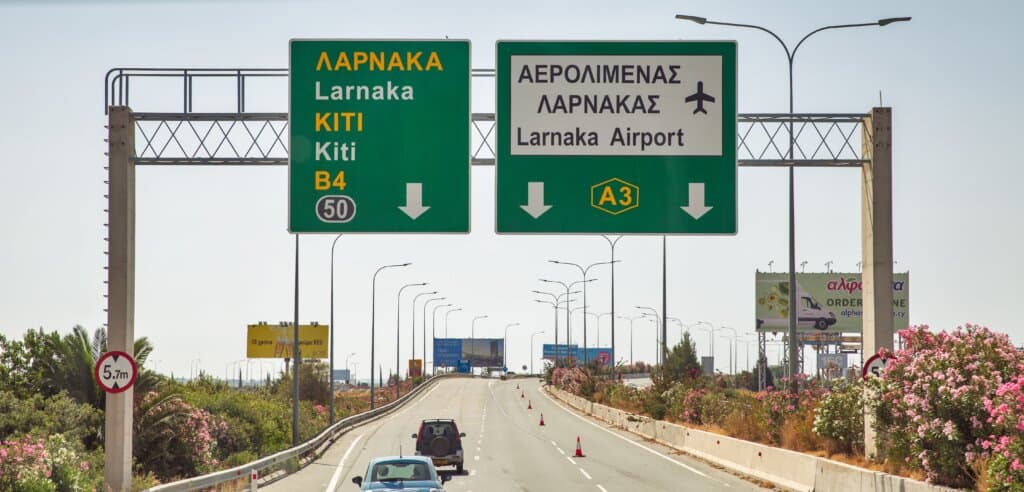
Overall, whether you’re visiting for business or leisure, the motorways of Cyprus will likely impress you with their efficiency and the ease with which they connect the main points of interest on the island. With picturesque views, especially on the coastal roads, driving can be both a practical and enjoyable way to explore this enchanting Mediterranean destination.
Tolls in Cyprus
Experiencing the roadways of Cyprus, you may wonder about the existence of toll roads. While many countries have adopted a system of tolls to maintain their infrastructure, Cyprus operates a bit differently. One of the striking features about driving in Cyprus is the absence of toll roads. Yes, you read that correctly – Cyprus does not have toll roads. This means that you can enjoy driving from the gorgeous coastal roads to scenic mountain paths without the need to budget for toll fees.
Seamless Travel Experience
As a motorist in Cyprus, you can expect a seamless travel experience without the interruption of toll booths. This smooth driving experience allows you to explore the island without the worry of having to carry cash or a toll pass to pay for road usage. The road network in Cyprus is well-maintained and provides easy access to major cities, tourist attractions, and quaint villages.
Cost-Saving Travel
Since there are no tolls to pay, the cost of road travel in Cyprus is essentially limited to fuel, car rental fees, and any applicable parking charges. This is particularly beneficial for tourists who are looking to explore multiple locations on the island without incurring additional costs. It’s also an advantage for those on a budget, as it simplifies travel expenses.
Avoiding Toll Roads – Not Applicable
In many countries with extensive toll road networks, drivers often seek alternate routes to avoid tolls and save money. In the case of Cyprus, however, the absence of toll roads means there’s no need to plan routes with the goal of avoiding tolls. You are free to choose your routes based on convenience, scenic value, or travel time without considering toll charges.
If you’re looking for more information regarding traveling in Cyprus, including any changes to the current road systems, you can always check the latest updates from the Cyprus Department of Public Works and Transport. For visitors planning their travel itinerary, it is advisable to visit the official website to ensure you have the most accurate and recent information.
Overall, the ease of driving and the absence of tolls contribute to making Cyprus an enjoyable and stress-free destination for self-driven road trips. You’ll find that the funds you would typically allocate for tolls can instead be spent on enjoying the local cuisine, historical sites, and beautiful beaches that Cyprus has to offer.
Speed Limits in Cyprus
Understanding the speed limits in Cyprus is crucial for safe driving and avoiding fines. The speed limits vary depending on the type of road you are driving on. Here is a breakdown of the general speed limits you can expect:
Urban Areas
In urban areas, the speed limit is usually set at 50 km/h. This is a standard limit designed to ensure the safety of both drivers and pedestrians in densely populated zones. Always be on the lookout for posted signs, as there may be specific areas with different limits.
Open Roads
When driving outside cities and towns, the speed limit typically increases to 80 km/h. These open roads offer a faster pace for transit between locations, but still require drivers to be vigilant, especially in areas where there may be crosswinds or sharp turns.
Motorways
On motorways, the speed limit is the highest, at 100 km/h. Some sections may allow for 120 km/h, but these are clearly marked. Motorways in Cyprus are designed to help you cover long distances efficiently, but it is important to maintain a safe driving speed and adhere to the posted limits.
As a driver in Cyprus, you’ll be expected to adjust your speed according to road conditions, traffic, and weather. When in doubt, err on the side of caution and go slower rather than faster.
To stay informed about speed limits and traffic regulations in Cyprus, you should consult the Republic of Cyprus – Road Transport Department or check the latest updates from the Cyprus Driving Information Site.
If you’re a visitor, it’s especially important to familiarize yourself with local driving laws. Some rental cars have stickers or visible notes about speed limits, but even if they don’t, remember that it’s your responsibility to know and follow the rules of the road. Observing speed limits is not only a legal requirement but it’s also a matter of safety for you and everyone else on the road.
Speeding Fines in Cyprus
In Cyprus, the cost of speeding fines can significantly affect one’s pocket. These fines are structured to be progressive, which means the amount increases with the degree by which the speed limit is exceeded. Fines start at around €1 for each kilometer over the limit but can rise to €5 per kilometer once you are more than 50% above the limit. In instances of excessive speeding, you can face a hefty fine of up to €2,000, and in severe cases, you may even face prosecution, which could lead to imprisonment.
Presence of Speed Cameras
Yes, Cyprus does employ the use of speed cameras to enforce speed limits. While these are not as extensively used as in some other European countries, they are present particularly in urban areas and on the highways. For more information and the latest on speed cameras, it would be advisable to check with the Republic of Cyprus Road Transport Department or the Cyprus Police official news portal for updates.
Common Speed Trap Locations
Speed traps are routinely set by the police on various types of roads, including main roads, secondary roads, and motorways. These traps may come in the form of mobile speed cameras or police with radar guns. Tourist-heavy areas and roads leading to and from major cities and towns are common places for speed traps, as these roads often have higher traffic volumes and instances of speeding.
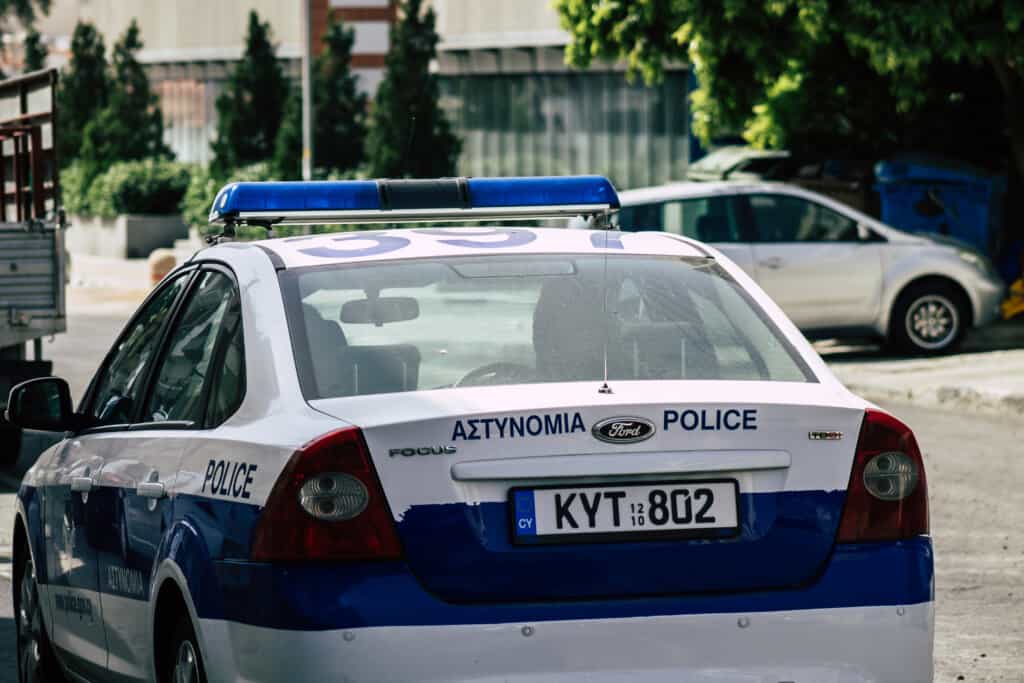
Speed Limits
When driving in Cyprus, it’s crucial to adhere to the posted speed limits, which are typically 50 km/h in built-up areas, 80 km/h on open roads, and 100 km/h on motorways. Rental cars are equipped with speedometers in both kilometers per hour and miles per hour, ensuring easy compliance for visitors from various countries.
Additional Considerations
It’s worth noting that Cyprus shares the road and driving customs of the United Kingdom, with the steering wheel on the right and driving on the left-hand side of the road. This practice can be somewhat disorienting for drivers from countries where the opposite is the standard. One should take extra care to maintain the correct speed, especially in such cases where the driving orientation is not what a driver is used to. Furthermore, road signage follows international standards, so speed limits and warnings are clearly posted. However, given the strict fines and road safety enforcement, it is wise to always remain cautious and stay within the legal speed limits at all times.
Lastly, for your safety and to avoid fines, it is recommended to familiarize yourself with local traffic laws before driving in Cyprus. Useful resources include the Road Transport Department and the Cyprus Driving website, which offer comprehensive insight into driving regulations on the island.
Drive Times in Cyprus
Traveling around Cyprus by car is one of the best ways to explore the island’s beauty at your own pace. Due to its compact size, driving between cities, towns, and attractions is quite straightforward and does not take too much time. All major roads in Cyprus are well-maintained and signposted. For the most accurate travel times and to check current road conditions, you can refer to the Republic of Cyprus’ Road Transport Department or the Cyprus Traffic Information Service.
Drive Times Between Cities and Towns
- Nicosia to Limassol: approximately 1 hour and 10 minutes
- Nicosia to Paphos: about 1 hour and 50 minutes
- Nicosia to Larnaca: around 40 minutes
- Larnaca to Limassol: roughly 45 minutes
- Larnaca to Paphos: close to 1 hour and 30 minutes
- Limassol to Paphos: typically 50 minutes
- Ayia Napa to Nicosia: about 1 hour
- Ayia Napa to Limassol: around 1 hour and 10 minutes
- Ayia Napa to Paphos: approximately 2 hours
Drive Times to Tourist Attractions
- Nicosia to Troodos Mountains: about 1 hour and 30 minutes
- Paphos to Akamas Peninsula: roughly 1 hour
- Larnaca to Cape Greco: around 40 minutes
- Limassol to Kourion Archaeological Site: about 20 minutes
- Ayia Napa to the Sea Caves: approximately 15 minutes
- Paphos to the Tombs of the Kings: merely 10 minutes
- Larnaca to Hala Sultan Tekke Mosque: about 15 minutes
- Nicosia to St. Hilarion Castle: close to 50 minutes
Note that the drive times mentioned are average and can vary depending on factors such as traffic, road works, and weather conditions. For a smooth visit, it’s best to plan ahead and consider potential delays. Rental cars, taxis, and intercity buses are widely available across the island for travelers. Enjoy your time driving in Cyprus and soak in the beautiful landscapes and rich cultural heritage along the way!
Car Seats for Children and Babies
Ensuring the safety of children and babies in vehicles is a crucial responsibility. In Cyprus, much like in many countries, laws are in place to protect young passengers on the road. According to Cyprus driving regulations, child car seats are mandatory for children up to the age of 12 or until they reach a height of 1.50m (whichever comes first). For visitors to the island, it’s imperative to be aware of and comply with these rules to ensure the safety of their children and to avoid hefty fines.
Categories Based on Age and Size
Car seats in Cyprus are categorized by the weight and age of the children:
- Group 0: For babies up to 10 kg (approx. 0-9 months)
- Group 0+: For babies up to 13 kg (approx. 0-15 months)
- Group I: For children weighing 9-18 kg (approx. 9 months to 4 years)
- Group II: For children weighing 15-25 kg (approx. 4-6 years)
- Group III: For children weighing 22-36 kg (approx. 6-12 years)
Different types of seats, such as rear-facing, forward-facing, booster seats, and high-back boosters, are used depending on the child’s weight and age category.
Renting Car Seats vs Bringing Your Own
When traveling to Cyprus with small children, parents have the option to rent car seats from car rental agencies or bring their own. Each option comes with its advantages and potential drawbacks.
Renting Car Seats
Most car rental agencies in Cyprus offer the convenience of renting a car seat along with your vehicle rental. It’s a hassle-free choice that can make traveling lighter and less cumbersome. The cost of renting a car seat varies, but it’s typically a daily fee which can add up over longer trips. It’s recommended to book the car seat in advance to ensure availability, and to check the condition and compliance of the car seat upon pick-up.
Bringing Your Own Car Seat
For parents who prefer to use a car seat they are familiar with and trust, bringing their own might be a better option. This ensures that the seat meets your personal standards for safety and hygiene. However, this option requires carrying the seat through airports and could incur additional baggage fees depending on the airline’s policies. Moreover, parents must ensure that their own car seat conforms to European safety standards, as indicated by the ‘E’ mark on the label, to legally use it in Cyprus.
Ultimately, the decision on whether to rent a car seat or bring your own rests with weighing the convenience against the cost and peace of mind in knowing the history and condition of the car seat your child will be using. Planning ahead can make either option work smoothly for your family’s trip to Cyprus.
Traffic
Understanding Cyprus Traffic
Cyprus offers a unique driving experience due to its mixture of modern and traditional infrastructure. Traffic can vary significantly depending on where you are on the island. Generally speaking, the roads are well-maintained and the signage is clear, especially on the highways and main roads.
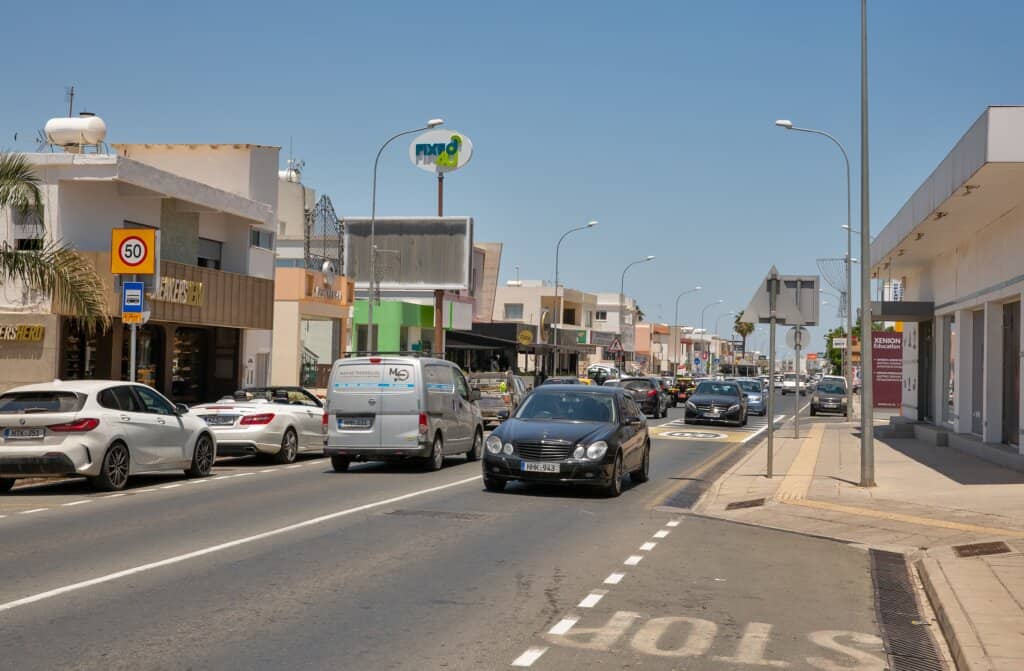
Driving in Cypriot Cities
In cities like Nicosia, Limassol, and Larnaca, expect traffic to be heavier, especially during rush hours which are typically from 7:30 to 9:30 AM and 5:00 to 6:30 PM. It is worth noting that most cities follow a structured grid system. You may find ample parking spaces in designated areas, but parking can be quite challenging in overcrowded areas and during peak hours. For up-to-date traffic information in cities, you might want to check with the Cyprus Ministry of Communications and Works before setting off.
Driving in Towns and Villages
When driving in smaller towns and villages, the traffic is usually lighter. But don’t be surprised if you encounter narrow streets, less formal parking arrangements or occasional agricultural vehicles. Always be on the lookout for pedestrians, cyclists, and parked vehicles. It’s also not uncommon to see small herds of sheep crossing the roads in rural areas!
While driving in Cyprus, keep in mind that you’ll be driving on the left side of the road, which may be an adjustment if you’re coming from a country that drives on the right. If you’re planning a trip and need to familiarize yourself with local driving laws and regulations, the Cyprus Driving website is a valuable resource.
Remember, being prepared and informed about the traffic conditions in Cyprus will make for a safer and more enjoyable experience. Whether cruising along the scenic coastlines, or navigating the busy streets of urban centers, understanding the local traffic flow is key to getting the most out of your journey around the island.
Top Tips for Renting a Car in Cyprus
- Choose the Right Vehicle
Consider the nature of your trip when selecting a car. If you’re planning to explore the mountainous regions of Troodos, a 4×4 might be a wise choice for the terrain. For city trips in Nicosia or Limassol, a smaller car might be more convenient for navigating and parking. It’s also important to check the boot space if you’re carrying luggage or equipment.
- Understand the Insurance Policy
Renting a car typically includes some form of basic insurance, but it’s crucial to understand what’s covered. Collision Damage Waiver (CDW) doesn’t cover everything, and you may want to purchase additional coverage for peace of mind. Always read the terms and determine if extra insurance, like Personal Effects Coverage, is necessary for your belongings.
- Know the Local Traffic Laws
Driving in Cyprus is on the left-hand side, and understanding local traffic regulations is crucial for a hassle-free experience. Speed limits vary and are strictly enforced with on-the-spot fines. Familiarize yourself with these rules and signs beforehand, and you can also check Cyprus Driving for up-to-date information on local traffic laws.
- Inspect the Rental Car Thoroughly
Before driving off, inspect the vehicle for any pre-existing damages and ensure they are documented by the rental company. Check the car’s interior and exterior, take photos, and report any defects you find. This will protect you from any unwarranted damage charges upon the return of the vehicle.
- Plan Your Fuel Strategy
When you pick up your car, take note of the fuel policy; some companies offer a full-to-full policy, while others have a full-to-empty policy. With the former, you’ll pick up the car with a full tank and will need to return it full to avoid extra charges. Find out where the nearest petrol station is to your drop-off location to refuel before returning. Use resources like Cyprus by Car to locate nearby petrol stations and compare fuel prices.
